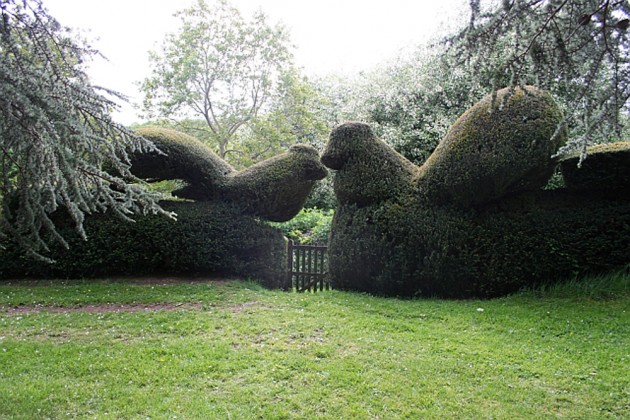Be realistic about what you grow in your garden, stick with old faithfuls which don't require more effort than you can give them, advises Willy Newlands
It’s the hardy faithfuls that have stuck with me, needing little supporting but proving their worth.
A fast-growing Lonerica hedge?
One of my worse ideas for to plant a Lonerica hedge at the front of the house. This was needed because a newly built wall, enclosing a terrace at the front door, looked desperately stark against the old sandstone building. The low wall was made of concrete blocks, harled and rendered, and painted with masonry paint, and it was obvious that it was going to look horribly new for many years, if not for ever.
So I thought of a quick fix. Dense, evergreen Lonicera. An armful of hardwood cuttings was hacked from various bushes around the place, all descendants of similar cuttings taken many years ago. Pushed in at handspan spacing, they all took, they were gratifyingly ignored by the rabbits, and they grew wondrously fast. Too fast.
The problem with things that grow fast, of course, is that they go on growing after you cry, “Enough!” Especially Lonicera.
I can’t remember which gardening writer said that every time he thought about getting out the lawnmower and dealing with the lawn, he was reminded that he had to plug in the trimmer and tackle the Lonicera hedge.
I thought he was exaggerating. However, as our hedge grew, this became the most regular of chores. And, because it flanked the steps up to the front of the house, its spiky, purplish-green growths were very much in your face.
When freshly cut, the hedge is undoubtedly very fine. Nothing takes a tighter cut than Lonicera, which can be so level that it looks worryingly like the plastic box hedge outside a high street pub. Within 10 days, however, it fights back and the new shoots appear. But last summer I noticed a new problem. The whole thing was swaying on its feet, the verticals were no longer quite upright and the top resembled a sinking aircraft carrier. Decision time.
A rabbit proof yew
I made the decision that yew may be a bit slower, at maybe 9in in a season, but its gentler pace of growth is undoubtedly a virtue. Like Lonicera, it is ignored by our rabbits – which will even nip Leyland cypress when they are in a bad mood – and it is not upset by our north-eastern climate. It also looks darkly civilised against the rather severe Georgian lines of the house. Definitely time for a change of hedge.
Potted plants in the courtyard
When my wife and I are around and the weather is a happy mixture of sunshine and showers, they are brilliant. We can shuffle them around so that there is always something in full bloom in the foreground, some gorgeous architectural leaf in the background, and no weeding to worry about.
On the other hand, the pot plants are a worry when the weather turns hot and dry in the summer, or bitterly cold in the winter, and the realities of business meetings get between us and the garden. Nothing dies faster or more permanently than a fuchsia that needs a drink. Automatic watering gear is either professional and prohibitively expensive, or amateur, with limited reach – and even then it’s very costly.

A border around the pond
So back to basics again
The answer to this problem is there already in the shape of a border round the goldfish pond in the middle of the courtyard. It has a mixture of common shrubs and perennials, ranging from rosemary to hostas. They need no more than occasional weeding, with a bit of a trim in the autumn, and they live happily with minimum attention, as do the water lilies. They are a happy sight for the low-input, country-house gardener who has more space than time.
Surround your patch of hardy, deep-rooted friends with a box hedge to conceal the under-storey and you have something that may be a little less exciting than your potted display but is much less worrying. The most familiar plants, from Nepeta to Crocosmia, give a great all-season show. Back to basics is best.
This article was originally published in 2014 and has been updated.





